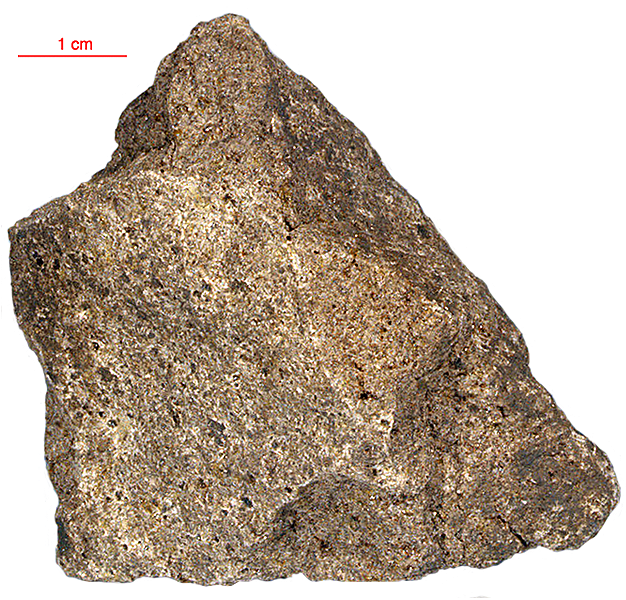
Fact sheet
15598 is a fine-grained, olivine-phyric basalt consisting of scattered olivine phenocrysts 0.6 to 1.3mm across, set in an intergranular matrix of plagioclase, pyroxene and opaque minerals. The olivine phenocrysts are subhedral to anhedral in outline, with embayed rims and ragged or fritted grain boundaries (see rotations 1 & 2). The groundmass consists of subhedral plagioclase laths 0.1 to 0.8mm long separated by a fine granular aggregate of pyroxene, ilmenite, and ulvospinel. Cristobalite, fayalite and residual glass are distributed in residual patches, but these are generally small and evenly distributed throughout the sample. The groundmass pyroxene is generally only 0.1mm to 0.4mm in diameter and forms a granular mosaic that fills in between plagioclase laths. Metallic iron often forms small globules within troilite.
The sample weighed 135.7 grams before analysis. It has not been dated.
Further details of this and other Apollo samples are here: http://curator.jsc.nasa.gov/lunar/
The Apollo 15 landing site was in the Apennine Highlands, and close to Hadley Rille — a long, narrow winding valley. Approximately 76 kg of lunar material, including soil, rock, core-tube and deep-core samples, were returned to Earth.
This mission was the first flight of the Lunar Roving Vehicle which allowed the astronauts to venture further from the Lunar Module than in previous missions. During three periods of extravehicular activity, or EVA, on July 31st, and August 1st and 2nd, Scott and Irwin completed a record 18 hours, 37 minutes of exploration, travelling 17.5 miles, in the first car that humans had ever driven on the Moon.
Apollo 15 was launched on 26 July 1971.






